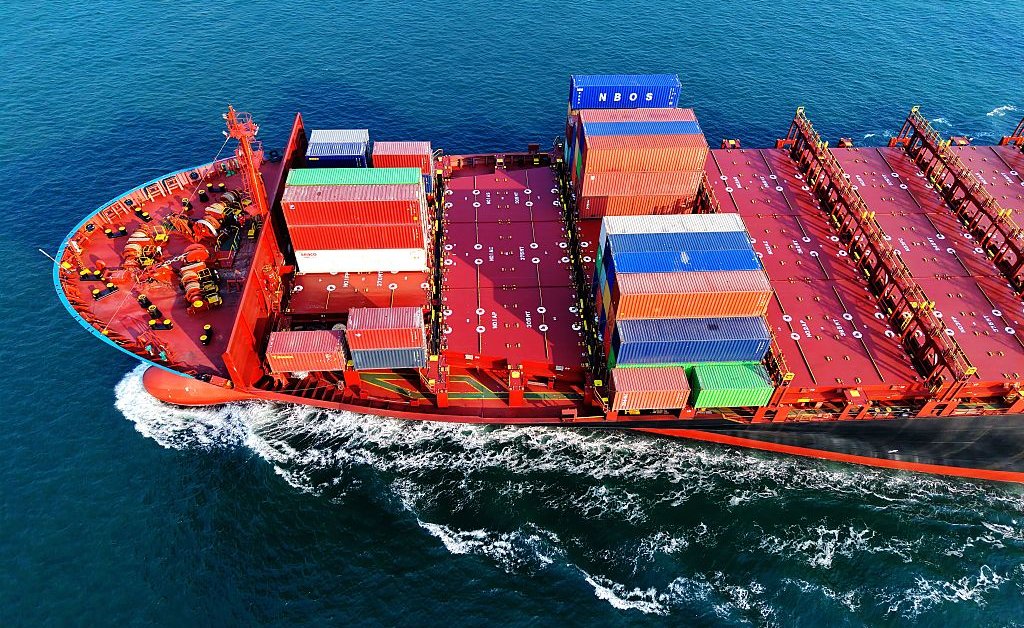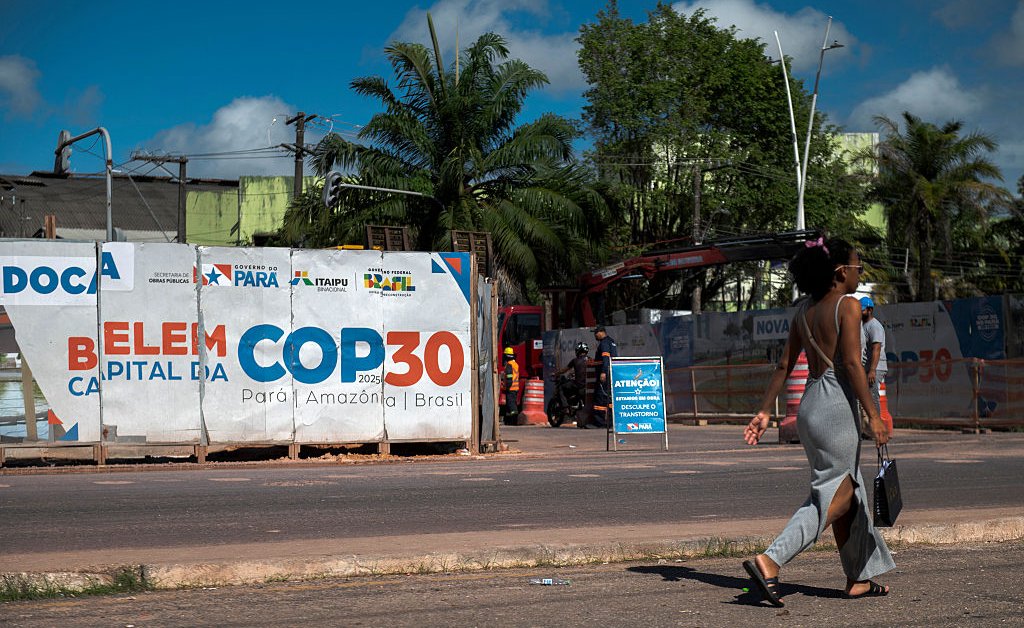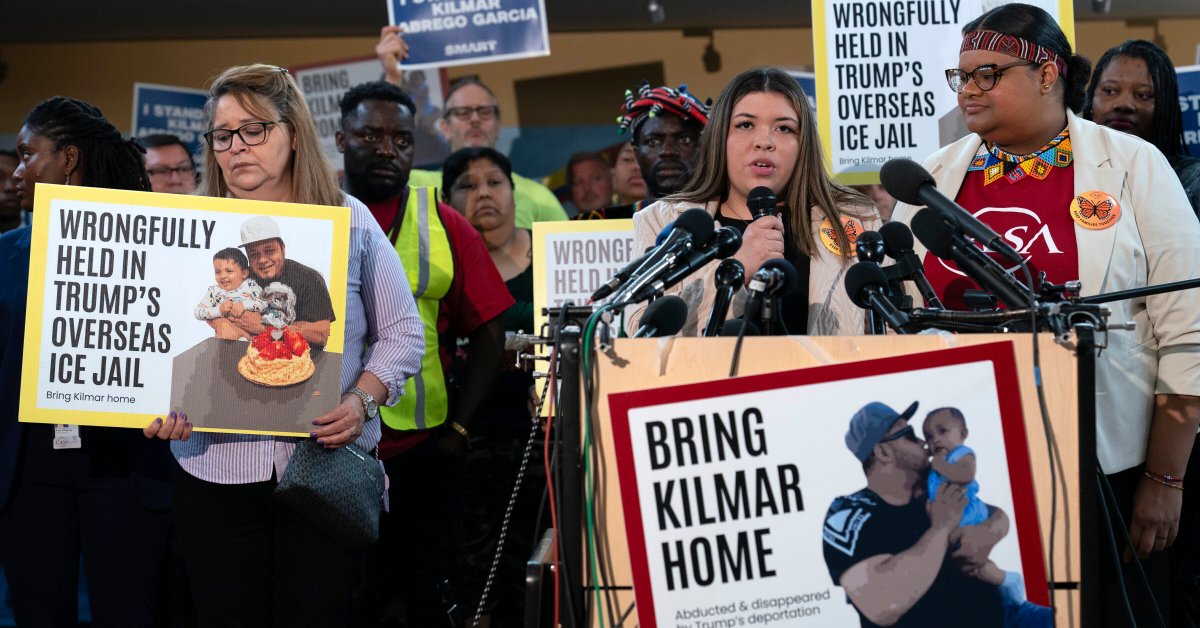When Itay Sharon’s $3,500 worth of goods arrived at a U.S. port on May 13, the shipment was subjected to a staggering 170% tariff, or close to $6,000. That was the result of President Donald Trump’s “reciprocal” tariff hikes on China since April 2, which rose as high as 145%, on top of a 25% tariff on certain goods from his first term. Had the shipment arrived a day later, however, it would have faced a 55% levy, or less than $2,000.
Sharon, who sells biodegradable and compostable bin bags, diaper bags, baby wipes, and pet wipes on Amazon in the U.S. and the U.K., hasn’t decided to what degree he should pass those costs onto the consumer in the form of higher prices, which would be necessary if his long-term costs are higher, or if he should absorb most of the hit assuming costs won’t dramatically rise again, as raising prices could impact demand. The problem is: no one knows what to expect next. “The uncertainty makes doing business very difficult,” Sharon tells TIME.
Trump stunned leaders, economists, and businesses around the world when he rolled out a slate of so-called “reciprocal” tariffs on imports from nearly every country in the world—with some as high as 50%. Just a week later, however, he announced a 90-day pause on the higher tariffs to allow for trade deal negotiations, temporarily reducing every country’s rate to 10% for most goods in the meantime.
Except for China: the two countries instead began an escalating tariff war that in a matter of weeks saw U.S. tariffs on Chinese imports rise as high as 145% while Chinese tariffs on American imports rose to 125%. The trade tensions between the world’s two biggest economies meant that for weeks many cargo shipments from China to the U.S. were halted and ports emptied out. But following talks in Geneva last weekend, the U.S. and China reached a truce: beginning May 14 and lasting for 90-days, U.S. tariffs on most Chinese goods would be brought down to 30%, while China would lower its tariffs on U.S. imports to 10%.
Read More: What the U.S.-China Trade Deal Means for Online Shoppers
But for many businesses across the U.S. that rely on Chinese manufacturing, the crippling tariffs have already done some damage—and the uncertainty of what may come after three months has left businesses trying to adapt to a volatile policy situation without knowing exactly what they’re preparing for.
Some have rushed to take advantage of the rollback by frontloading and stockpiling shipments. Container bookings for China to U.S. routes soared nearly 300% in the days after the truce was announced, particularly as businesses anticipate end-of-year holiday shopping demand.
“Many retailers had paused or canceled shipments prior to the announcement,” Jonathan Gold, the National Retail Foundation’s vice president of supply chain and customs policy, tells TIME. “They are now working with their suppliers to quickly ramp up orders for arrival before the 90-day truce ends. This is currently the busiest time of year for retailers that are in the process of placing orders for the all-important fall and winter holiday seasons.”
Not knowing what comes next has led “many importers to bring whatever possible into the U.S.,” says Peter Sand, chief analyst at Xeneta, an ocean and air freight rate analytics platform. But when the tariffs were first announced, several of the main container lines moved capacity away from the Pacific due to the fall in demand, Sand adds, so it will take a few weeks to redeploy them from other routes back to the China-U.S. route. Sea freight shipping from China to the U.S. typically takes two to five weeks, a timeline that makes it very difficult to quickly change course.
“Bigger companies are better prepared for fluctuations like this, simply due to scale and also due to the fact that they may be able to absorb some of the higher tariffs better than smaller mom and pop shops,” Sand says. As big companies rush to secure cargo shipments, small and medium sized companies may also have to “scramble for what’s left in terms of capacity on board. It’s not just one rate, the big players out there pay lower freight rates, and the smaller ones often see something which is much higher.”
And for many smaller companies, stockpiling isn’t as straightforward of an option. Anna Griffin, who owns an Atlanta-based small business selling luxury paper craft products that have been sourced from four factories in China since 2001, tells TIME that since her goods are designed by her company and at times even customizable, she can’t import more than a few months’ inventory. Sharon, too, says it doesn’t make sense in his business to stockpile inventory and have to pay potentially high storage costs.
But even for larger companies, Donald Low, an economist at Hong Kong University of Science & Technology’s Institute of Public Policy, tells TIME that stockpiling is merely a “stop-gap measure.” The kind of “momentous, costly, sticky” business decisions, like shifting production out of China that the Trump Administration ostensibly wants, aren’t likely to be made within this 90-day window, Low says.
“When companies relocate, it is not a kind of decision they take lightly. It is something that requires significant planning, financial investment, and reconfiguration of logistic arrangements. This is not something that is done in a matter of weeks or months,” says Low. “Why make any decisions if you only have a window of 90 days and you don’t know what is going to happen after?”
Why relocating isn’t so easy
“The last seven weeks have felt like seven years to me,” Griffin, the small business owner, tells TIME.
Griffin spent the weeks after Trump’s initial tariff announcement looking at shifting production away from China. But she says, “we were met immediately with higher costs and an incredible learning curve—the quality was not going to happen in the first year of transitioning, and that’s if we could get production space” as thousands of other businesses were also looking at moving production to factories in other countries.
Most factories in other countries also have higher minimum order quantities than those in China, says Ash Monga, who runs China-based supply chain management company IMEX Sourcing Services, and they often don’t have the same infrastructure that has allowed China to become such an efficient manufacturing environment.
“China has been the world’s manufacturer, and they are experts at it,” Griffin says.
Read More: Why China Laughs at the Idea of Americans Taking Their Manufacturing Jobs
“It’s a long process,” Monga says of diversifying supply chains. In most cases, and especially for complex products or companies that hadn’t yet begun before the tariffs, it would take months, if not years. The process typically involves speaking to multiple factories, negotiating prices, and ordering and making samples—which can take multiple rounds of feedback depending on the complexity of the product—before finally being able to start production to sell. There’s a difference between “China time,” Monga says of the speed at which Chinese factories are able to go through that process, and everywhere else. “China has been doing it for so long, they’ve evolved over time and become very, very efficient.”
Griffin also considered moving production into the U.S., but after speaking with multiple printers across the country, she says she found that none would be able to produce the same quality or even type of sticker that she gets made in China. “Not only could they not do it, but it was more than 200% of the cost that we’re currently paying”—even higher than paying the highest tariff to import it from China, she says.
“I don’t think it’s possible for a small business to just change on a dime and find anywhere in the world,” she says. “It just couldn’t happen in the infinitesimal moment that was given to us to avoid business disruption.” Griffin has recently been able to move some production to a factory in Malaysia, which is run by the same director as the factories she works with in China, but the bulk of her production has remained in China.
Sharon, who works with factories in both China and Vietnam, also looked into transitioning production to the U.S., but on top of likely increased production costs and higher minimum order quantities, he says he found that U.S. factories have been slow to respond during a critical time for his business. “I can’t work with them under these circumstances,” he says.
“What’s at stake right now is the backbone of the U.S. economy, and small businesses that employ people are having to, whether we like it or not, absorb these tariffs,” Griffin says. “It’s not about getting manufacturing made in the U.S.—that’s just it: I can’t, we can’t.”
Tariff uncertainty may even lead businesses toward China
Over the last decade, more companies have begun pursuing a “China Plus One” strategy wherein businesses diversified their manufacturing and sourcing to include operations in at least one other country besides China to mitigate trade risks. That effort was further propelled by the impact of the COVID-19 pandemic on global supply chains, Low says. “It became quite clear to many businesses that were producing in China to serve the world that they needed more resilience in addition to just focusing on efficiency,” Low says.
Trump’s global “reciprocal” tariffs, however, demonstrate “an effort to decouple not just from China but decouple from the rest of the world as well,” Low says. Potential beneficiaries of “China Plus One,” like Vietnam, Cambodia, and Malaysia, were also initially hit with punitive tariffs, and it is not yet certain what rates they will ultimately face after the 90-day rollback.
Read More: How ‘Friendshoring’ Made Southeast Asia Pivotal to the AI Revolution
While Trump’s trade war ceasefire brings some short-term relief, it also, Low says, “confirmed companies’ fears that these decisions were temporary, were not long lasting, were just arbitrary ones that could easily be reversed. And as we have seen, they have been reversed.”
The result could actually mean more companies staying put in China, where at least production standards are high and costs other than tariffs are low, while waiting for more long-term policy clarity.
“Brands that had started to diversify away from China are now stuck mid-transition, unsure whether to double down or pull back,” says Rachel Kibbe, founder and CEO of American Circular Textiles, a coalition of industry leaders advocating for more resilient domestic supply chains.
Says Low of Trump’s trade volatility: “At best it created uncertainty, and at worst it might actually have reversed the trend of ‘China Plus One,’ the trend of shifting some of the production facilities out of China, because given the uncertainty, companies would just stick with the status quo until things become clearer.”
“The market really moves to the tune of the policy uncertainty from the Trump administration,” says Sand. “Such a business environment here is pretty toxic for anyone working in supply chains where predictability, reliability and resilience are key words.”








